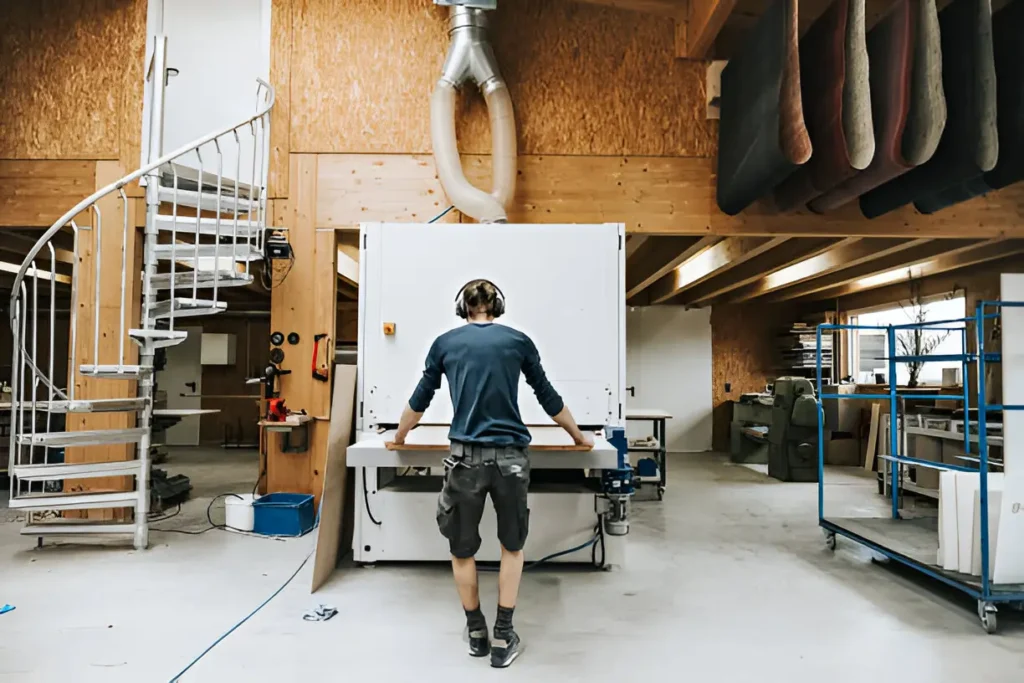The Growing Demand for Small-Part Edgebanding
Woodworking trends are evolving as customers demand more intricate designs with precise edgebanding on small pieces. Traditional methods can be slow, inconsistent, or risky for such delicate work. Tools like the Hand held Edge band fine trimmer are being widely adopted to improve safety and accuracy. Automation and specialized machinery are revolutionizing how shops handle repetitive and fine work. Modern woodworking demands equipment that can handle volume, complexity, and flexibility across a wide range of part sizes.
Barriers to Achieving Flawless Edges
Creating seamless edges on small panels presents challenges, including feeding them through standard machines without slipping or damaging the workpiece and risking misalignment and inconsistent glue lines due to their short lengths and narrow widths. Employee safety is also a concern, as manual processing increases the risk of repetitive motion injuries and contact with moving machinery. Dust and debris can interfere with adhesives and blemish fresh finishes. Enclosed work cells and active dust collection can help. Companies must also consider the labor/time trade-off between hand-edged parts and automation for consistency and safety without sacrificing quality.
Recent Innovations Making a Difference
The push for efficiency is driving a wave of innovation in small-part edgebanding. Vacuum-based clamping systems, advanced roller or track feed mechanisms, and automated sensors now make it possible to hold even the tiniest parts securely. Compact edgebanders and handheld trimmers let team members edge pieces that might be impossible with conventional tools. Built-in scanners or part recognition mean fewer errors when setting up jobs or changing materials on the fly.
Many modern shops are also adopting hybrid solutions: using their larger automated lines for full-size sheets and dedicated small-part systems for custom or short-run projects. Open-source CNC controllers or modular jigs are becoming increasingly common, allowing shops to adapt quickly to one-off production runs or high-mix orders.
Workflow Tips for a Productive Shop
- Strategic Layout: Arrange sheet goods and parts to minimize awkwardly sized leftovers before cutting. Prioritizing smaller panels for separate runs helps keep machine and operator setups efficient.
- Separate Small-Part Processes: Group together similar operations to reduce changeover times and improve material handling traffic flow.
- Templates and Jigs: Use custom templates or reusable jigs to hold small, irregular, or fragile pieces. It not only ensures safety but also results in more consistent output.
- Adhesive Monitoring: Track glue application rates and patterns. Small parts need just the right amount for adhesion, without excess that may seep out during finishing.
Material Choices and Their Impact
Selecting the ideal edge material for a small part can significantly impact its durability and aesthetics. Thicker, high-impact edgebanding resists chipping and rounding but may require heavier-duty applicators. Thin, flexible PVC or real-wood veneers are easier to manipulate but may require gentle handling and specific trimming methods.
As outlined in Wood Magazine’s edgebanding materials guide, understanding the bonding and trimming characteristics of each material—whether ABS, melamine, or wood—helps in choosing the right approach for each project. For example, balancing cost, color matching, and post-processing needs can significantly improve finished part quality while maintaining production agility.
Emphasizing Safety and Worker Comfort
Safety systems and ergonomics are crucial when working with small parts. Proper positioning of hand guards, push paddles, and guardrails; investing in user-friendly machines with fail-safes; and using personal protective equipment are all essential. Workflow zoning and isolating automated processes are crucial in busy environments. Simple steps, such as adjusting machine height and using anti-fatigue mats, can help reduce discomfort and minimize the risk of injury. Employee training and refresher courses can enhance safety and productivity in these environments.
Quality Control: What Sets Your Shop Apart
Diligent quality checks, especially for small parts, minimize rework and enhance customer satisfaction. Implement a simple, clear routine with spot inspections:
- Check every part for a consistent, tight glue line—no bubbles or cold joints
- Inspect edge ends for chips and splintering after trimming
- Perform periodic assembly mock-ups with representative pieces
- Use good lighting to spot imperfections missed by the naked eye
These habits catch errors before assembly, saving significant time and material.
Looking Ahead: Future-Proofing Your Edgebanding Strategy
Woodshops must adapt to increasingly complex demands, particularly in handling micro-sized and one-off special parts. Keeping up with technology, investing in training, and adapting to customer expectations are crucial. Embracing new processes and tools can help small-part edgebanding become an opportunity for differentiation. Planning, ongoing investment, and focusing on output and safety ensure readiness for the market, making woodshops ready for tomorrow’s market.
Read more: The Advantages of Implementing SD-WAN as a Managed Service for Enterprises
The Ultimate Guide to Reliable Vinyl Wrap Manufacturers For Your Car Wrap Projects
Common Myths about Hiring an SEO Services Company in the UK


